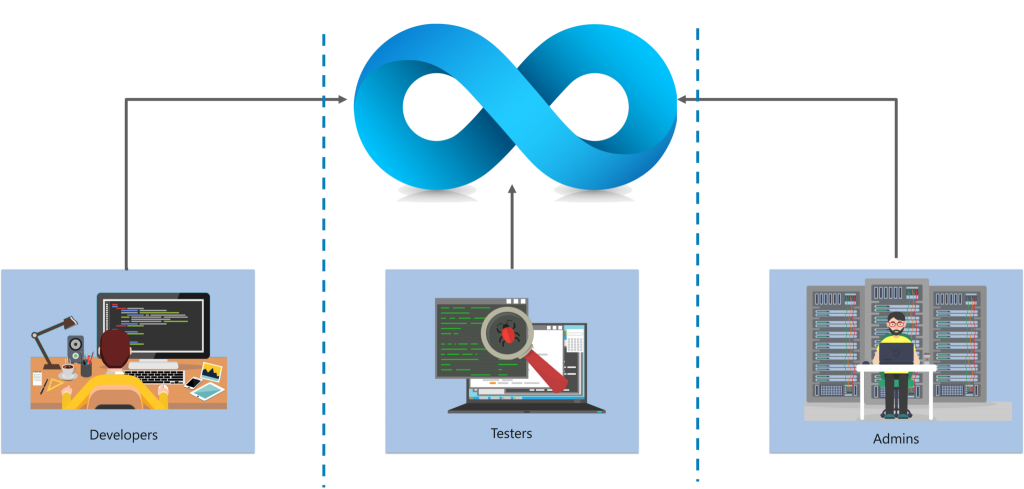DevOps is the most efficient approach to software development nowadays. It is not just an overstatement, it is a current reality of the IT industry. DevOps philosophy provides automation of the routine processes and makes software development smooth and efficient.
What is it, how does it work and why do you need it in your company? We’ll answer these questions below.
What is DevOps?
DevOps services are a set of tools and technologies for software development. The main idea of the DevOps methodology is to automate some routine processes that take a lot of time for the team. For example, outdated software development process includes next steps:
- development;
- testing;
- deployment.

DevOps approach includes the same steps, so what’s the difference? Before DevOps arose, development was the longest part, testing started only after the whole development and deployment only after testing all the functions.
It is really long and the process of adding a new feature might take months or even years. While the DevOps services allow writing, testing and deploying the code in small parts. It makes fast and frequent releases possible. Thus, the team can work more efficiently.
How is it possible?
This significant efficiency increase looks like a kind of magic. But it is a real process that is possible because of DevOps transformation. So, what is DevOps transformation and who can provide it?
DevOps transformation can be provided by the DevOps team. It can be a dedicated team or your in-house team. Such a team makes the next step to provide DevOps services and culture to your company.

- Assessment. The very first and very important step is assessment. The DevOps team needs to understand the scope of work will they have. They estimate time, evaluate the bottlenecks in current infrastructure and make the analysis.
- Roadmap. After the assessment, the team creates the roadmap of future work. They discuss with you your goals, describe to you the important transformation steps and recommend the best way and tools for your system. On this step, you decide if you need a cloud migration, redesign of current infrastructure, what time and investments you might be ready to spend.
- Preparations. These are preliminary steps before DevOps transformation. Some infrastructure might need redesigning if it uses outdated technologies. Some infrastructure might need cloud migration if is still uses on-prem hardware. Anyway, there is always some work before the DevOps transformation.
- DevOps transformation. This is the automation of software development processes that includes a lot of steps like creating Infrastructure as Code, providing Continuous Integration and Deployment, providing Continuous Monitoring, etc. These measures allow automating the testing and deployment, which significantly reduces the time-to-market for your applications. Continuous Monitoring allows checking the infrastructure’s state anytime and logging all bottlenecks if they arise. Thus, your system becomes efficient and safe.
- Teamwork. Besides providing the newest technologies, DevOps transformation includes work with teams. It is important to change some internal processes and increase team cohesiveness for the real DevOps transformation. That’s why the DevOps team works with your software development team and explains how to use new tools, how to cooperate and other important moments.
How to implement DevOps services to your company?
We hope you already understand, how beneficial the DevOps transformation is. So, the last question is how to implement it into your company?

To utilize the DevOps benefits, you should hire the DevOps team. There are two common ways: an in-house team or a dedicated team. The first way is longer and more expensive. Actually, it is quite useless, if you need the once-only transformation, because you should pay the salaries to the team after DevOps transformation or fire the whole team. So, the dedicated team is more preferable. This team will onboard on your project, make the transformation and say goodbye without regrets.
A few words in the end
We described the DevOps transformation and the main steps of it. It might seem a long and complicated process, but don’t be afraid of the DevOps transformation. With a reliable dedicated team, it will be a comfortable and pleasant process.
The longer you postpone the DevOps implementation, the more complicated it would be, because the software becomes a legacy that makes the transformation harder. So, don’t delay your DevOps transformation and enjoy automation and fast releases as soon as possible.



